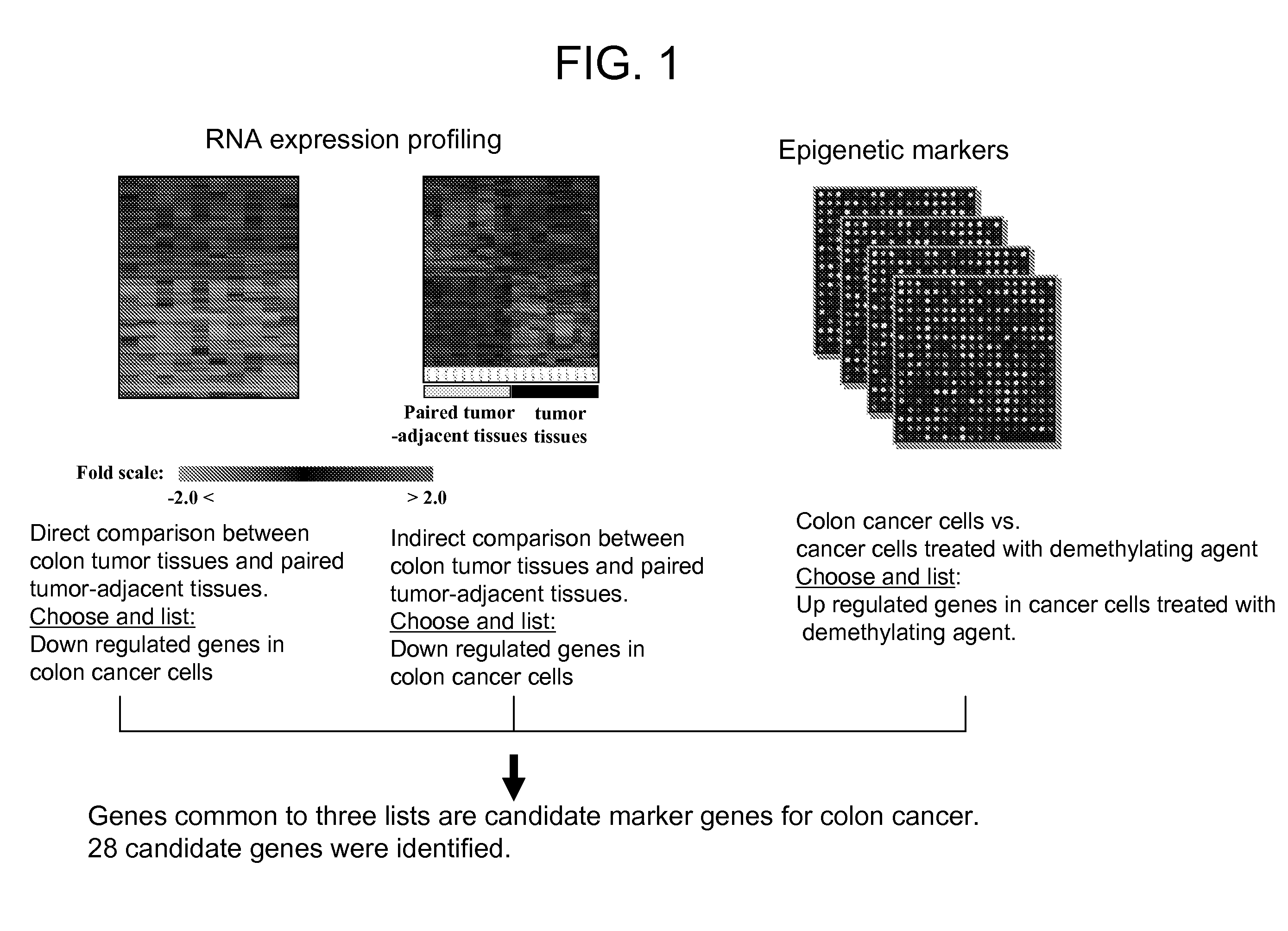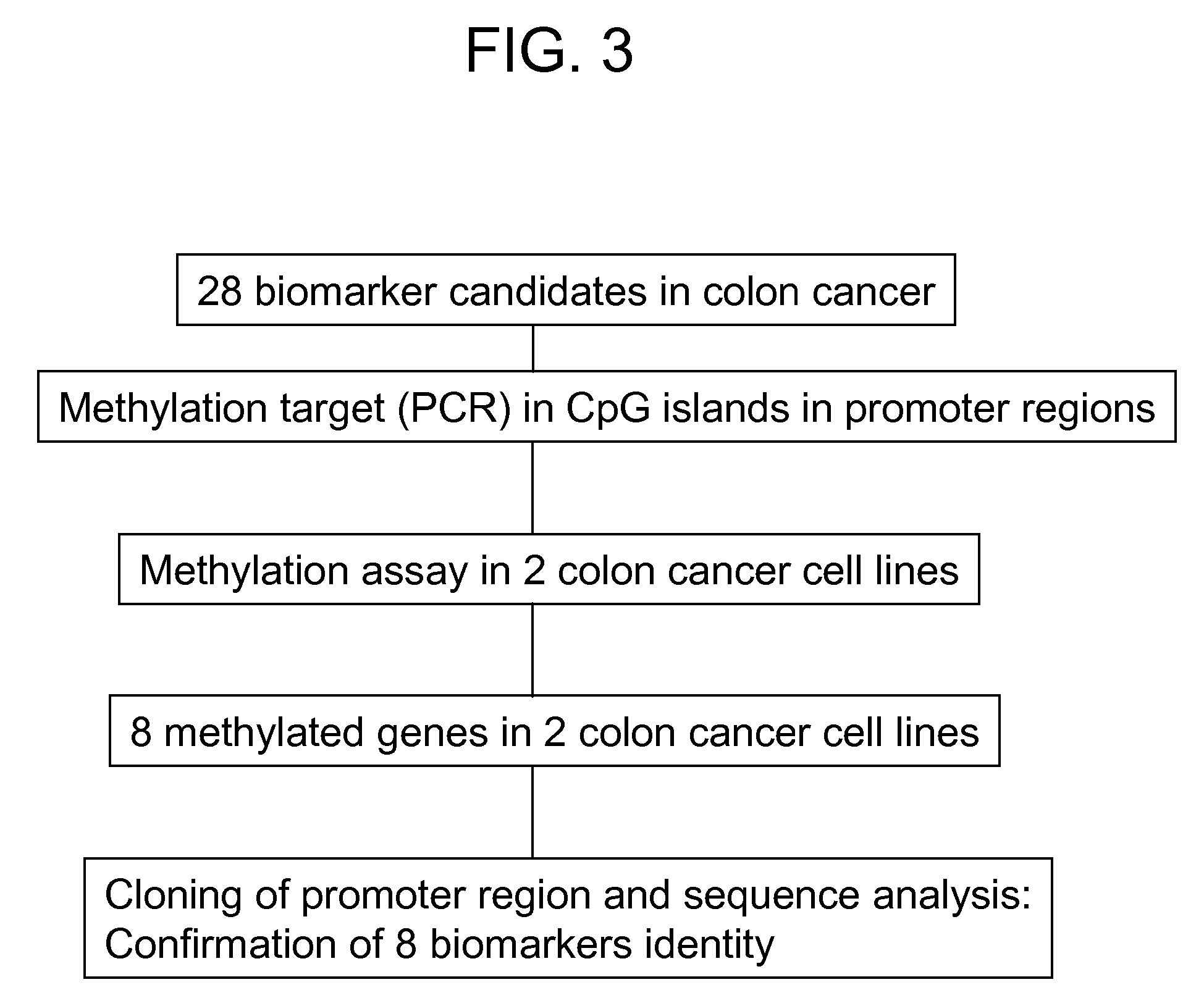Colon cancer biomarker discovery
a biomarker and colon cancer technology, applied in biochemistry apparatus and processes, organic chemistry, sugar derivatives, etc., can solve the problems of poor results in cancer diagnosis and therapy, difficult diagnosis, and limited accuracy
- Summary
- Abstract
- Description
- Claims
- Application Information
AI Technical Summary
Benefits of technology
Problems solved by technology
Method used
Image
Examples
example 1
Identification of Genes Repressed in Colon Cancer
[0140] To identify genes repressed in colon cancer, microarray hybridization experiments were carried out. Microarray hybridizations were performed according to standard protocol (Schena et al, 1995, Science, 270: 467-470). Total RNA was isolated from non-tumor adjacent to tumor part (10 samples) and tumor part (10 samples) of colon cancer patients. To compare relative difference in gene expression level between non-tumor and tumor tissues indirectly, we prepared common reference RNA (indirect comparison). Total RNA was isolated from 11 human cancer cell lines. Total RNA from cell lines and colon tissues were isolated using Tri Reagent (Sigma, USA) according to manufacturer's instructions. To make common reference RNA, equal amount of total RNA from 11 cancer cell lines was combined. The common reference RNA was used as an internal control. To compare relative difference in gene expression levels in non-tumor and tumor tissues, RNAs ...
example 2
Identification of Methylation Controlled Gene Expression
[0143] To determine whether the expression of any of the genes identified in Example 1 is controlled by promoter methylation, colon cancer cell line Caco-2 was treated with demethylation agent, 5-aza-2′deoxycytidine (DAC, Sigma, USA) for three days at a concentration of 200 nM. Cells were harvested and total RNA was isolated from treated and untreated cell lines using Tri reagent. To determine gene expression changes by DAC treatment, transcript level between untreated and treated cell lines was directly compared. From this experiment, 425 genes were identified that show elevated expression when treated with DAC compared with the control group which was not treated with DAC. 28 common genes between the 188 tumor repressed genes and the 425 reactivated genes were identified.
example 3
Confirmation of Methylation of Identified Genes
PUM
 Login to View More
Login to View More Abstract
Description
Claims
Application Information
 Login to View More
Login to View More - R&D
- Intellectual Property
- Life Sciences
- Materials
- Tech Scout
- Unparalleled Data Quality
- Higher Quality Content
- 60% Fewer Hallucinations
Browse by: Latest US Patents, China's latest patents, Technical Efficacy Thesaurus, Application Domain, Technology Topic, Popular Technical Reports.
© 2025 PatSnap. All rights reserved.Legal|Privacy policy|Modern Slavery Act Transparency Statement|Sitemap|About US| Contact US: help@patsnap.com



